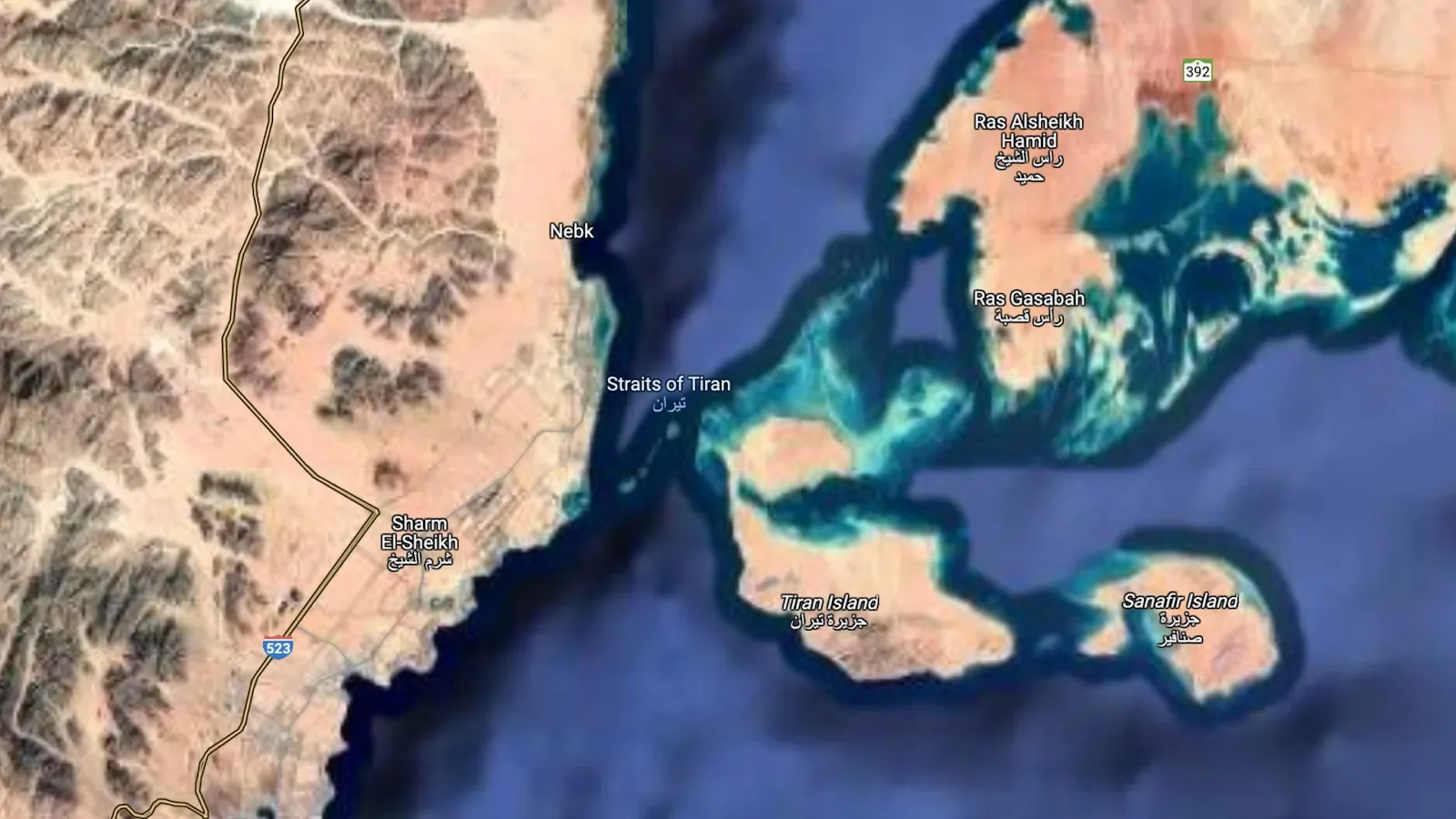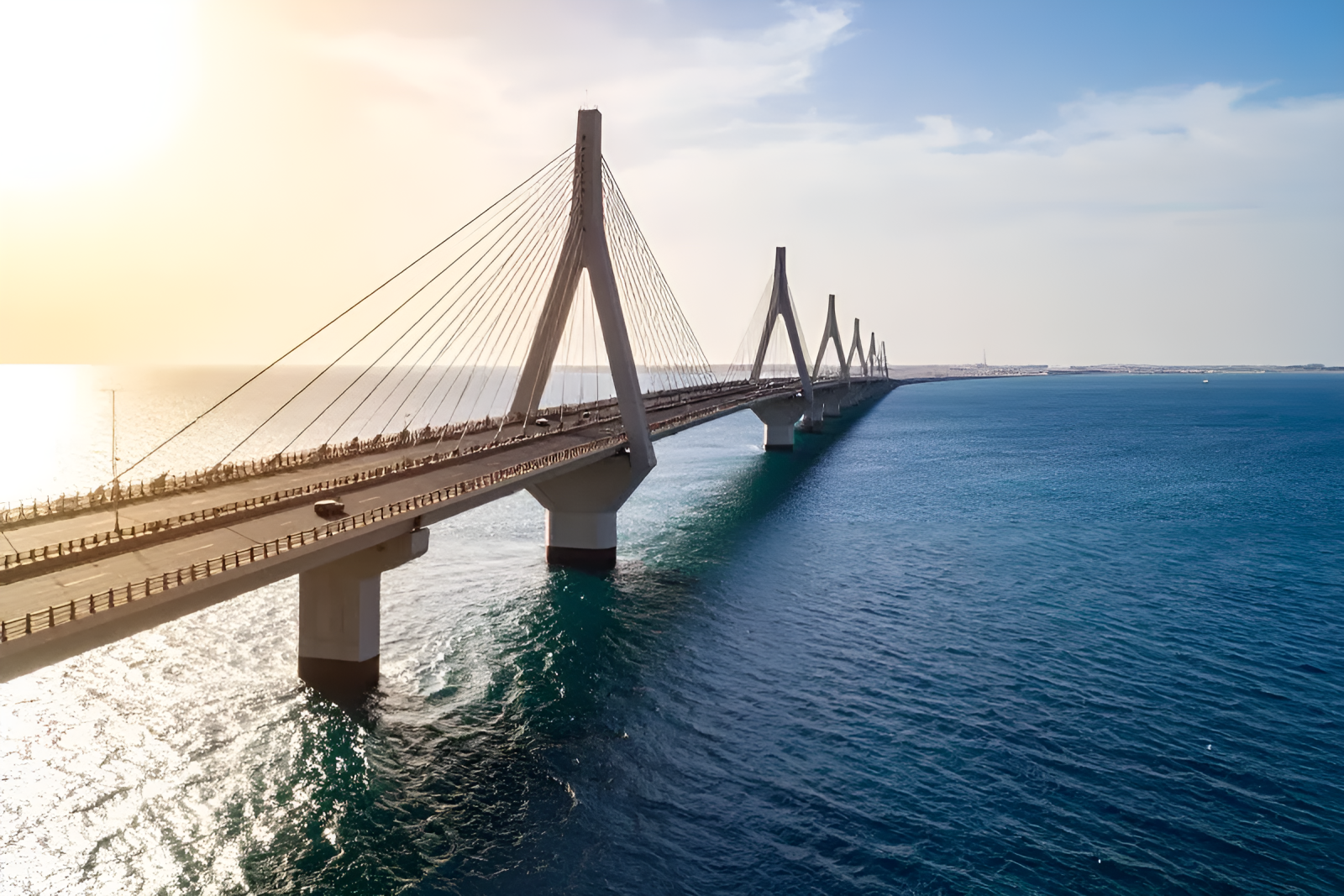Plans to construct a monumental bridge across the Red Sea connecting Ras Alsheikh Hamid in Saudi Arabia with Sharm El-Sheikh in Egypt via Tiran Island have moved from concept to near-implementation, Egyptian authorities confirmed this month.
In an exclusive statement to Reuters, Egypt’s Transport Minister and Deputy Prime Minister Kamel al-Wazir announced that the planning phase for the long-anticipated project has been completed. “We are ready to implement it at any time, whether a bridge or a tunnel,” said al-Wazir, signaling that the megaproject is no longer speculative but poised for execution pending final agreements.
Physical and Symbolic Link Between Continents
First announced in 2016 during King Salman bin Abdulaziz Al Saud’s visit to Egypt, the Red Sea bridge project aims to physically and economically connect the continents of Asia and Africa. Crown Prince Mohammed bin Salman has reiterated his central role in Saudi Arabia’s Vision 2030, describing it as a strategic asset to bolster intercontinental trade, tourism, and religious pilgrimage routes.
If realized, the structure would establish the first direct land crossing between Saudi Arabia and Egypt, linking two major regions of the Arab world. In Saudi Arabia, the bridge will connect to the planned NEOM economic zone, while on the Egyptian side, it will feed into expanding infrastructure tied to the New Administrative Capital, located 45 kilometers east of Cairo.

The current proposal includes not only a bridge or a tunnel but also a high-speed railway line to transport cargo and passengers across the Strait of Tiran. This design element underlines the project’s ambition to modernize regional logistics and enhance connectivity across the Red Sea.
According to reports, the total project cost is estimated at $4 billion, to be funded predominantly by Saudi Arabia. The bridge is also expected to integrate with broader logistics networks along the Red Sea corridor, which has become a focal point for both nations’ development plans.
Environmental and Strategic Concerns
Spanning an estimated 7 kilometers across the Strait of Tiran, a vital and historically sensitive marine passage, the bridge’s ecological impact is under scrutiny. The region harbors fragile coral reefs and serves as a migratory route for various marine species. In response, Egypt’s Ministry of Environment is collaborating with UNESCO and marine biologists to safeguard the Red Sea’s biodiversity.
The area is also geopolitically sensitive. Tiran Island, which the bridge would pass over, was demilitarized as part of the 1979 Egypt-Israel Peace Treaty. Any construction here must respect existing international maritime agreements and may require coordination with Israeli authorities to ensure compliance with freedom of navigation terms.

NEOM and Egypt’s New Capital in Spotlight
The bridge is seen as a key artery supporting NEOM, Saudi Arabia’s controversial $500 billion mega-region along the Red Sea coast. One of its most ambitious components is The Line, a linear smart city composed of parallel 500-meter-high skyscrapers stretching 170 kilometers. NEOM climate advisor Donald Wuebbles has publicly cautioned that the scale of such projects could influence local weather systems and calls for careful impact assessments.
In parallel, Egypt is showcasing its mega-project, the New Administrative Capital, planned to house over 6 million residents. Officials suggest the bridge will help integrate Sinai with national infrastructure, transforming the peninsula into a logistical and commercial hub.
Religious, Cultural, and Political Significance
“Moses Bridge,” the project resonates deeply in cultural memory and religious heritage. For pilgrims in North Africa, the bridge could provide an easier overland route to Mecca, cutting travel times and reducing dependence on air routes.
At the same time, analysts warn that political sensitivities remain. The area has played a role in past regional conflicts, including the Six-Day War in 1967. To ensure long-term success, both governments are engaging in diplomatic coordination over navigation rights, environmental protection, and border protocols.
Although a formal groundbreaking date has not yet been announced, construction could begin as early as 2026, pending final regulatory clearances and international agreements. Stakeholders in both Egypt and Saudi Arabia appear optimistic, positioning the bridge as a defining element of a new era of Arab cooperation and transcontinental connectivity.


















Leave a comment